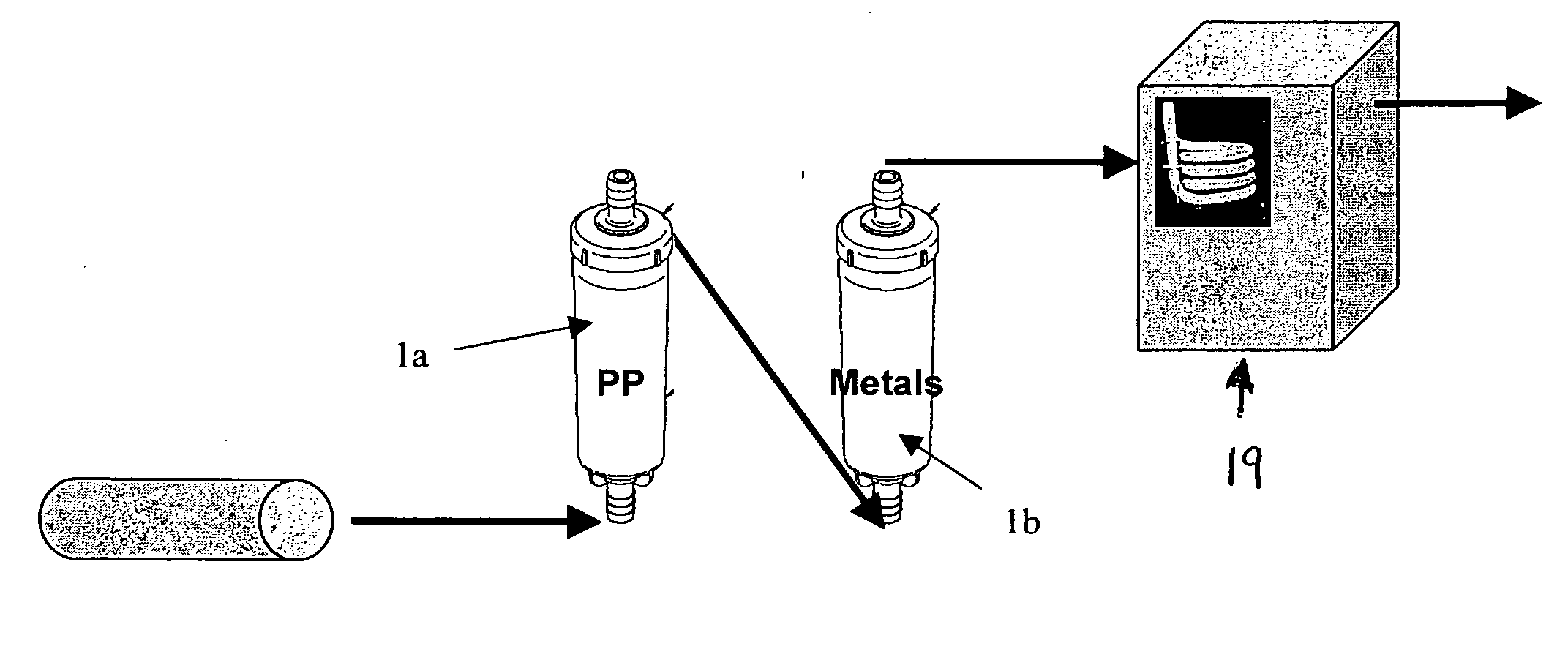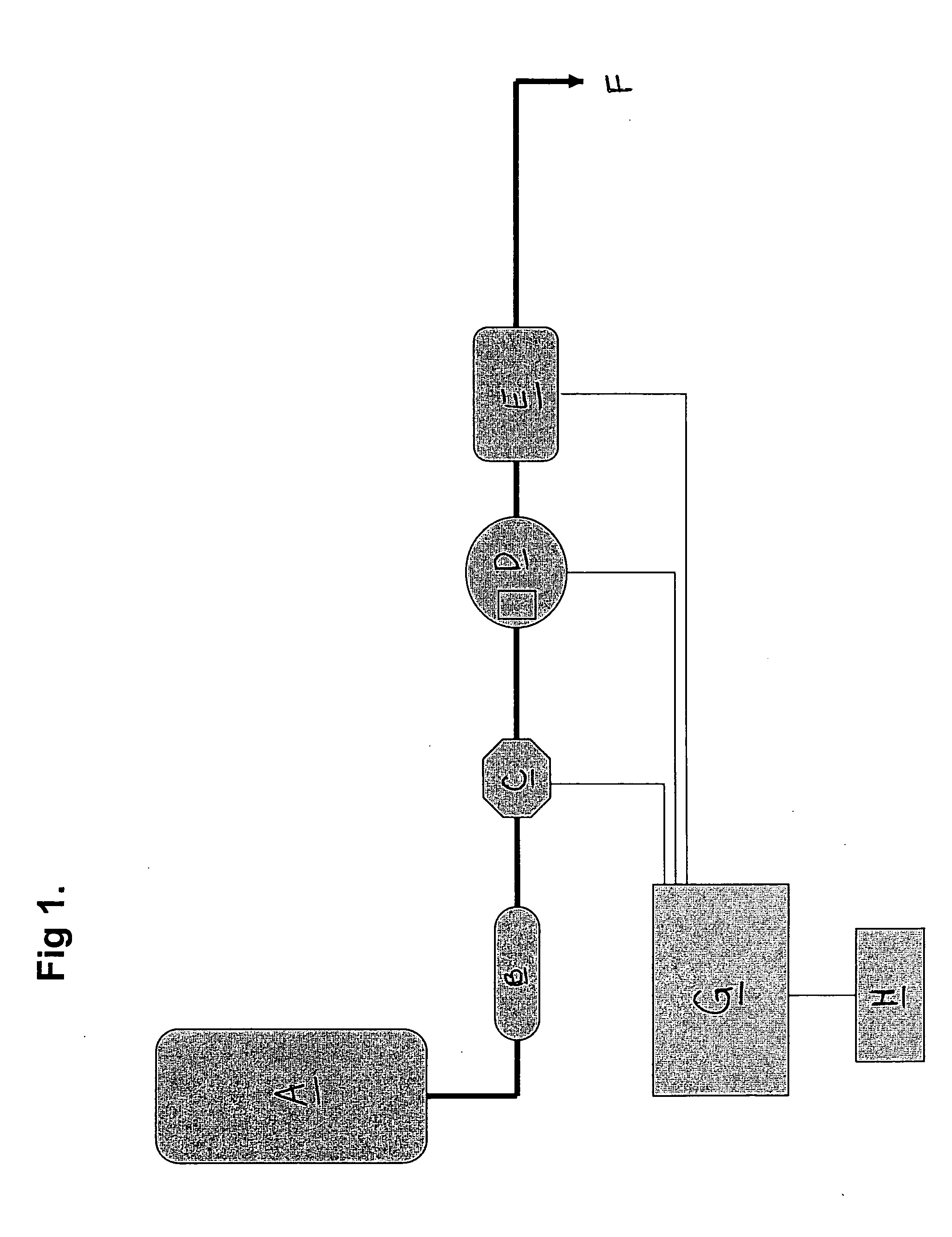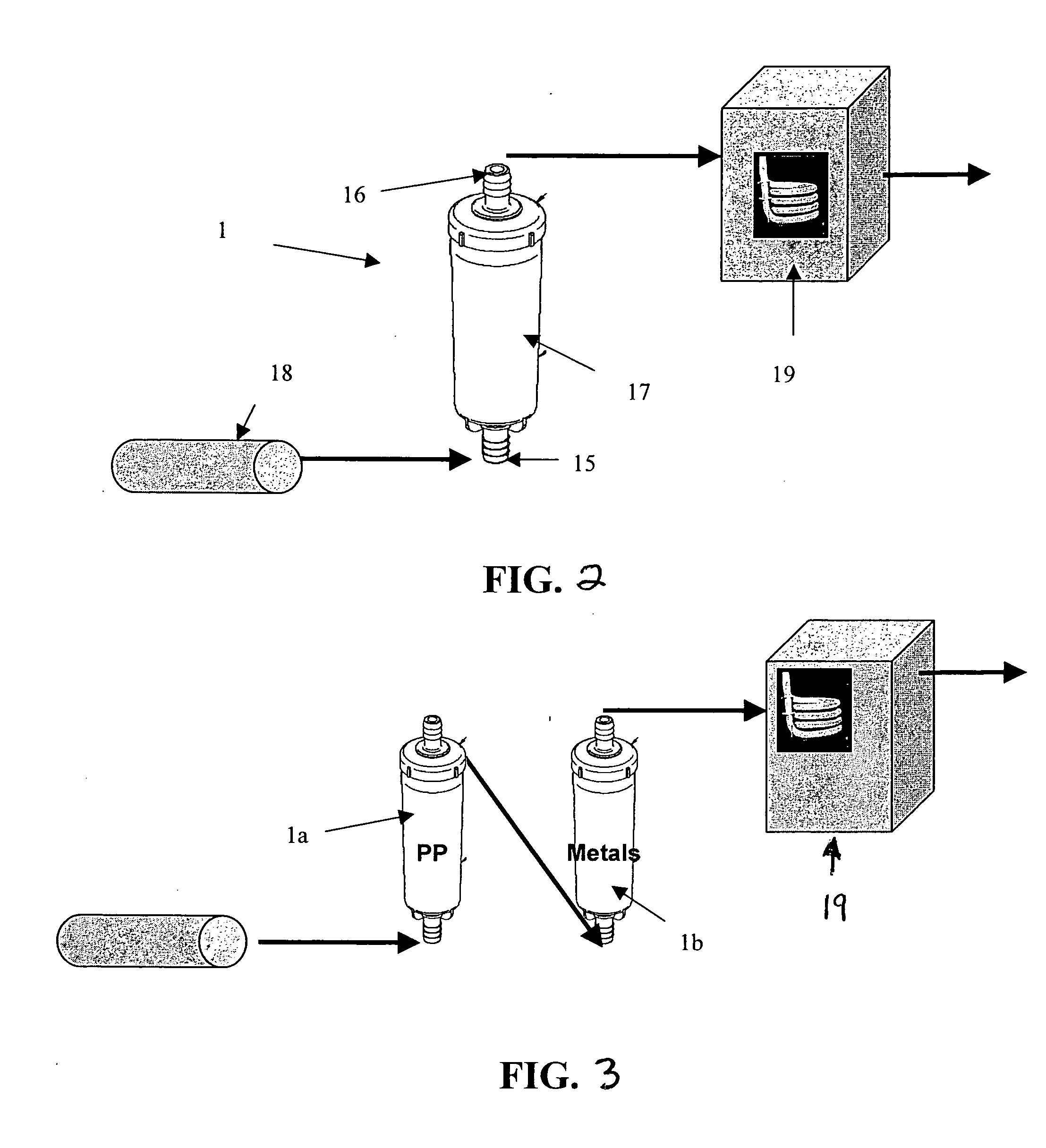Water treatment method in high cycle dispensing systems for scale control
a water treatment method and high-cycle technology, applied in water softening, instruments, separation processes, etc., can solve the problems of clogging hot water pipes, reducing the heating efficiency of boilers or other water heaters, and many water-using appliances out of service, so as to reduce scale accumulation and reduce scal
- Summary
- Abstract
- Description
- Claims
- Application Information
AI Technical Summary
Benefits of technology
Problems solved by technology
Method used
Image
Examples
example 1
Performance of Beverage Dispenser with Water Treated by Zinc and Copper Particulate Alone
[0046] To help solve equipment performance issues due to scale formation during water heating, water treatment with metal particulates was used. The particular material is KDF-55® powder, where KDF-55° is the brand name of a granular medium made of pure, lead-free brass commercialized by KDF Fluid Treatment (U.S.A.).
[0047] Water Treatment Cartridges comprising of 50% Cu and 50% Zn were used in the test. The cartridges were designed to get at least 1 gal / min water flow rate using tap water pressure.
[0048] A prototype beverage dispenser including a treating cartridge is schematically illustrated in FIG. 1.
[0049] The permanent water hardness was ca 250 ppm as calcium carbonate, and pH was 7.6.
[0050] As shown in FIG. 3, the performance of the prototype dispenser with the cartridge was improved by 4 times, i.e. number of servings (until there was a 10% decrease in amount of water delivered per c...
example 2
Performance of Beverage Dispenser with Water Treated by Polyphosphates Alone
[0052] Commercial polyphosphate cartridges were used in the test. The cartridges provide a minimum of at least 1 gal / min water flow rate using tap water pressure.
[0053] The same dispenser and treating cartridge were used as in Example 1.
[0054] The permanent water hardness was ca 250 ppm as calcium carbonate, and pH was 7.6.
[0055] As shown in FIG. 3, the performance of the prototype dispenser with the polyphosphate cartridge was improved by about 4 times (which is similar to that for the metal particulate water treatment).
example 3
Performance of a Beverage Dispenser with Water Treated by Metal Particulates and Polyphosphates
[0056] The same prototype beverage dispenser was evaluated on its performance using a combination of both metal particulates (zinc and copper) and polyphosphate containing cartridges.
[0057] To be treated, raw water was passed through a set of cartridges, first through a commercial cylindrical polyphosphate unit placed in the water feed line to the machine and then through a metal particulates cartridge of the type referenced in Example 1.
[0058] Water samples were collected every about 1,000 cycles for mineral analyses. Results showed that levels of zinc (about 1.0 ppm) and copper (about 0.05 ppm) ions released into treated water were within the preferred range.
[0059] Water treatment with a combination of polyphosphate and metal particulates (i.e., zinc and copper) improved the dispenser performance of more than 50 times. The amount of water delivered remained above 90% of the target qu...
PUM
| Property | Measurement | Unit |
|---|---|---|
| particle size | aaaaa | aaaaa |
| particle size | aaaaa | aaaaa |
| size | aaaaa | aaaaa |
Abstract
Description
Claims
Application Information
 Login to View More
Login to View More - R&D
- Intellectual Property
- Life Sciences
- Materials
- Tech Scout
- Unparalleled Data Quality
- Higher Quality Content
- 60% Fewer Hallucinations
Browse by: Latest US Patents, China's latest patents, Technical Efficacy Thesaurus, Application Domain, Technology Topic, Popular Technical Reports.
© 2025 PatSnap. All rights reserved.Legal|Privacy policy|Modern Slavery Act Transparency Statement|Sitemap|About US| Contact US: help@patsnap.com



